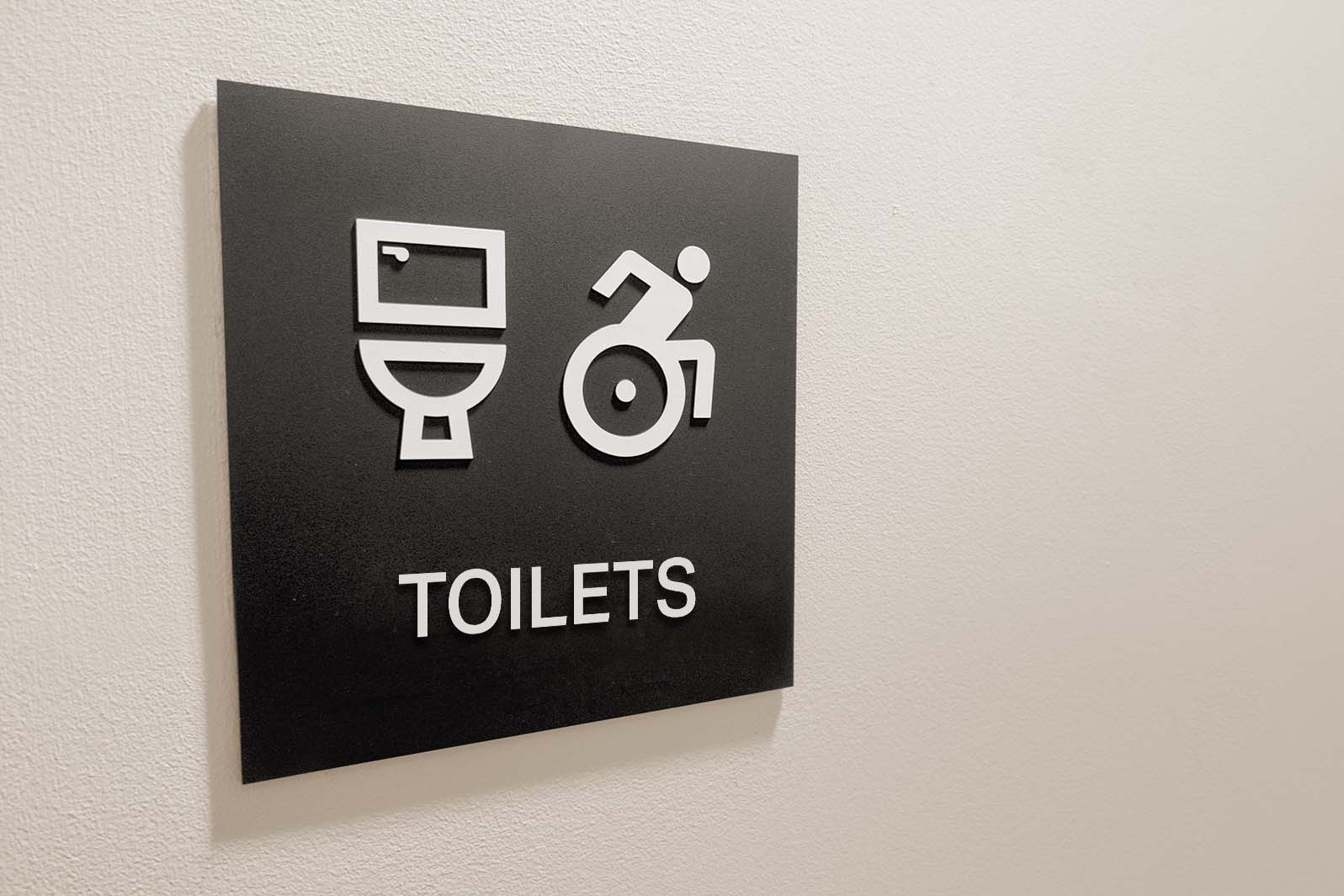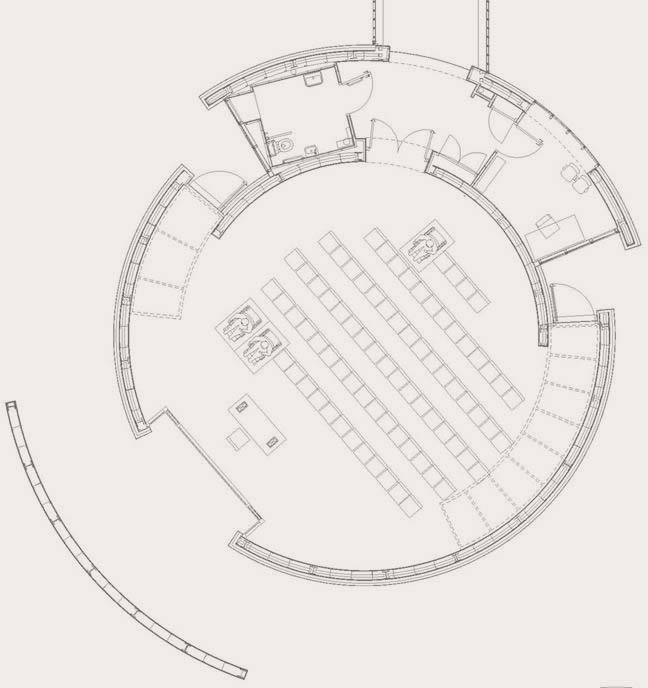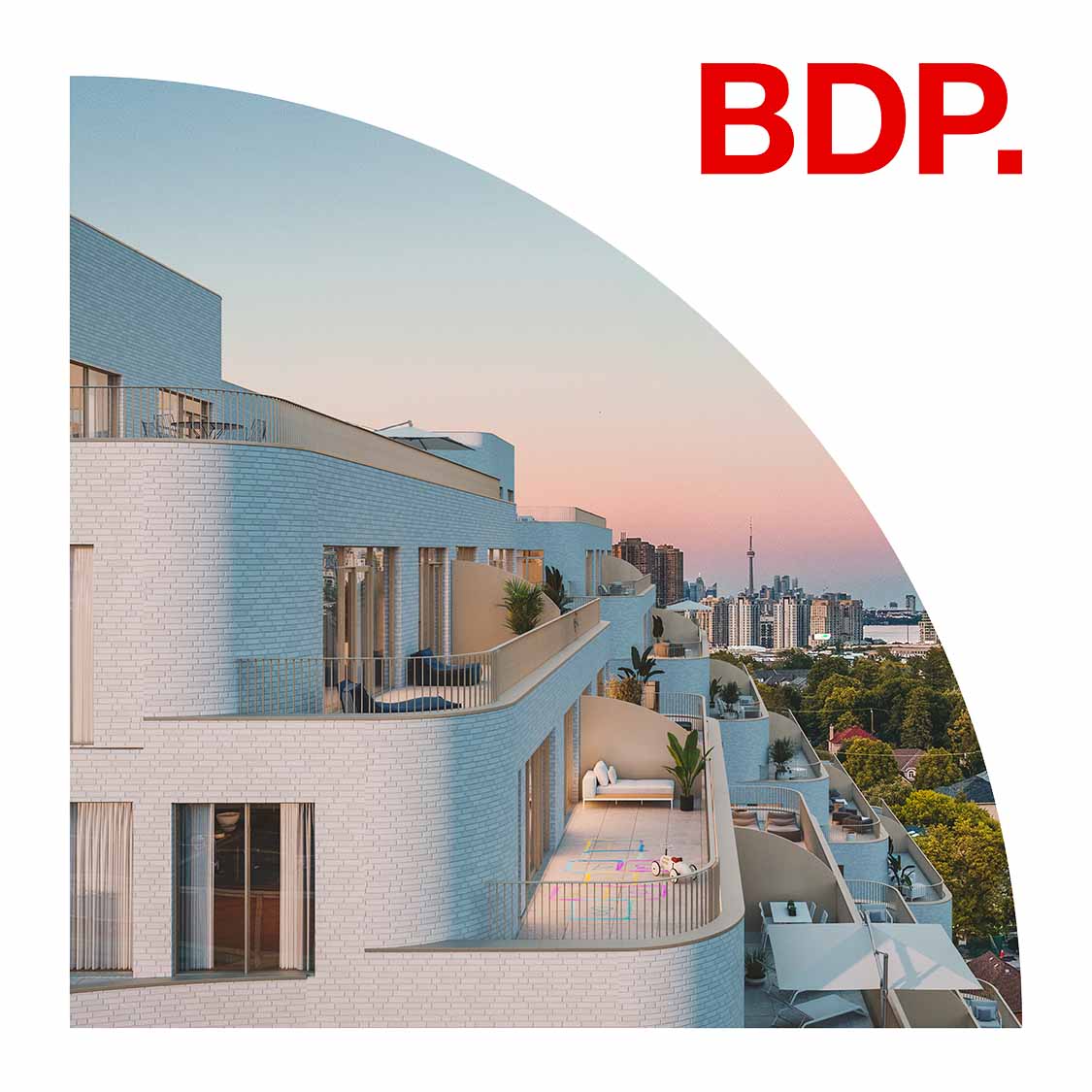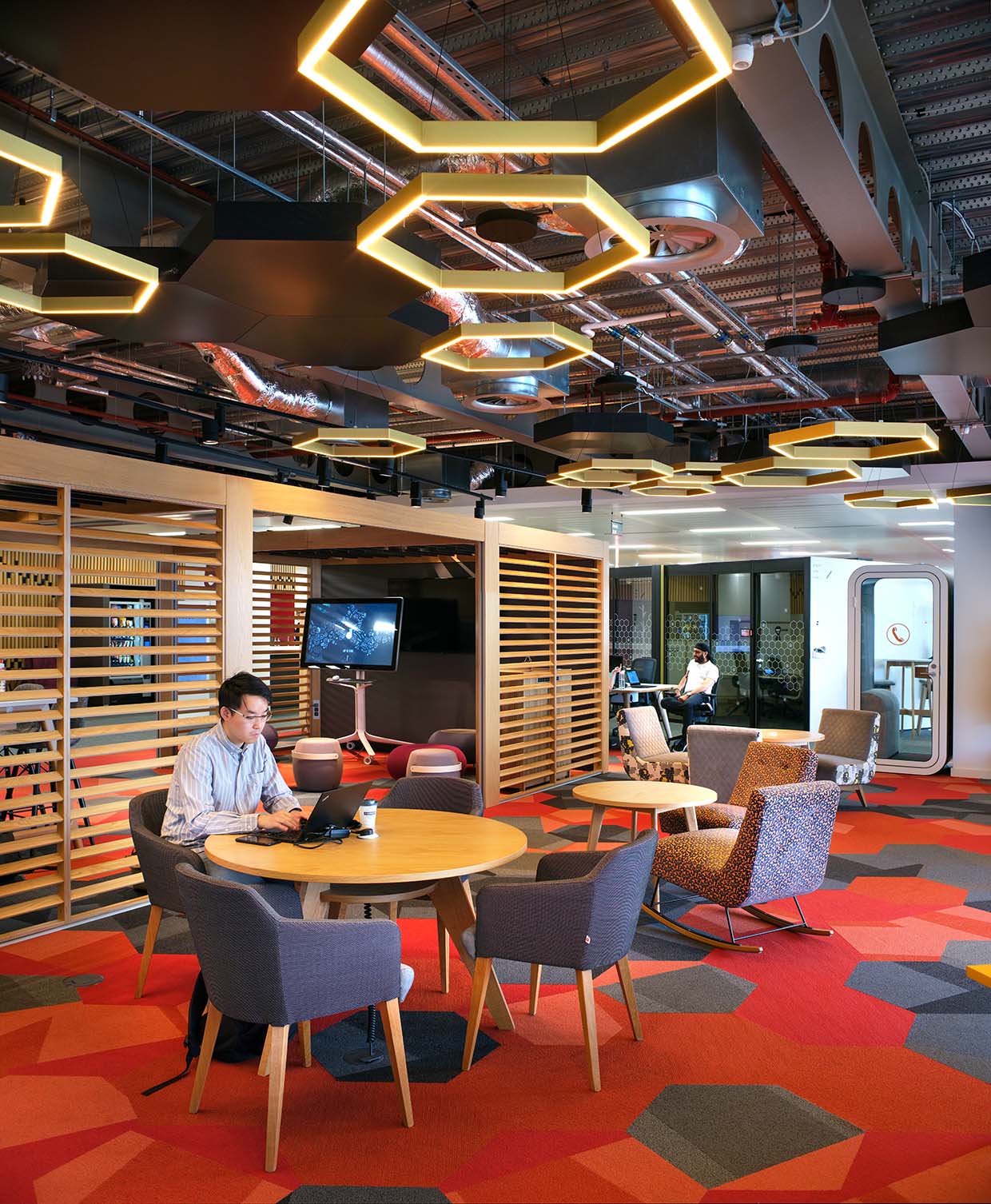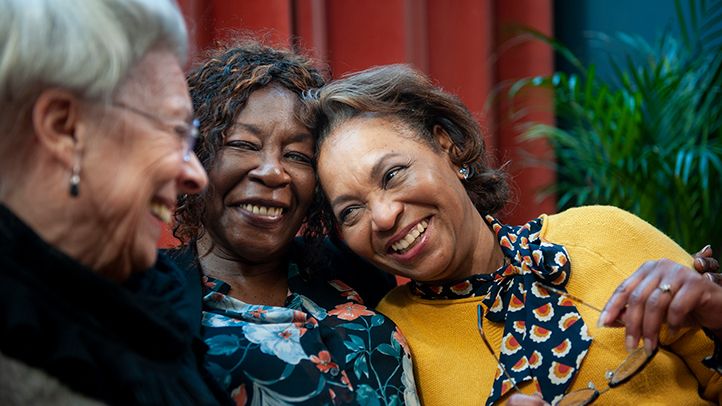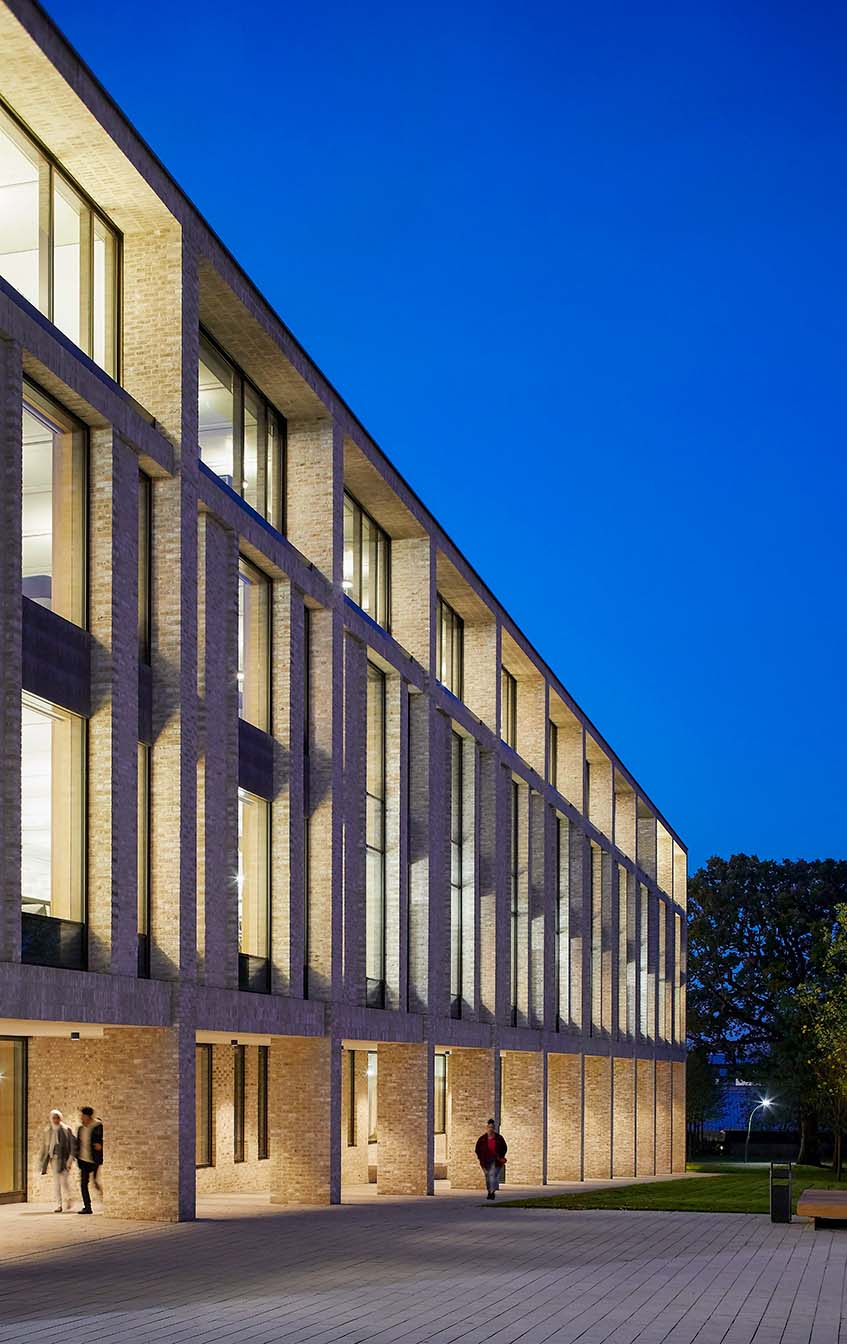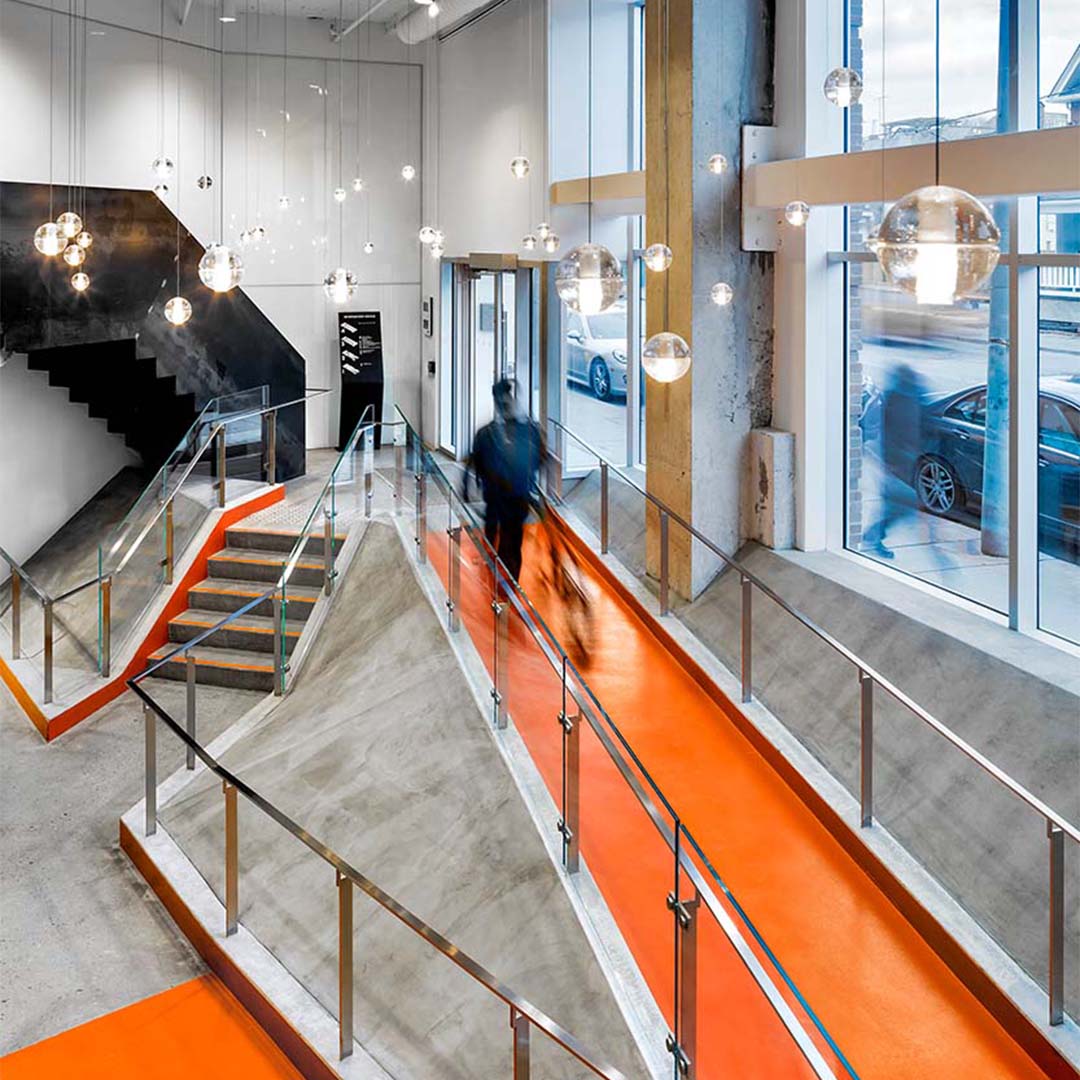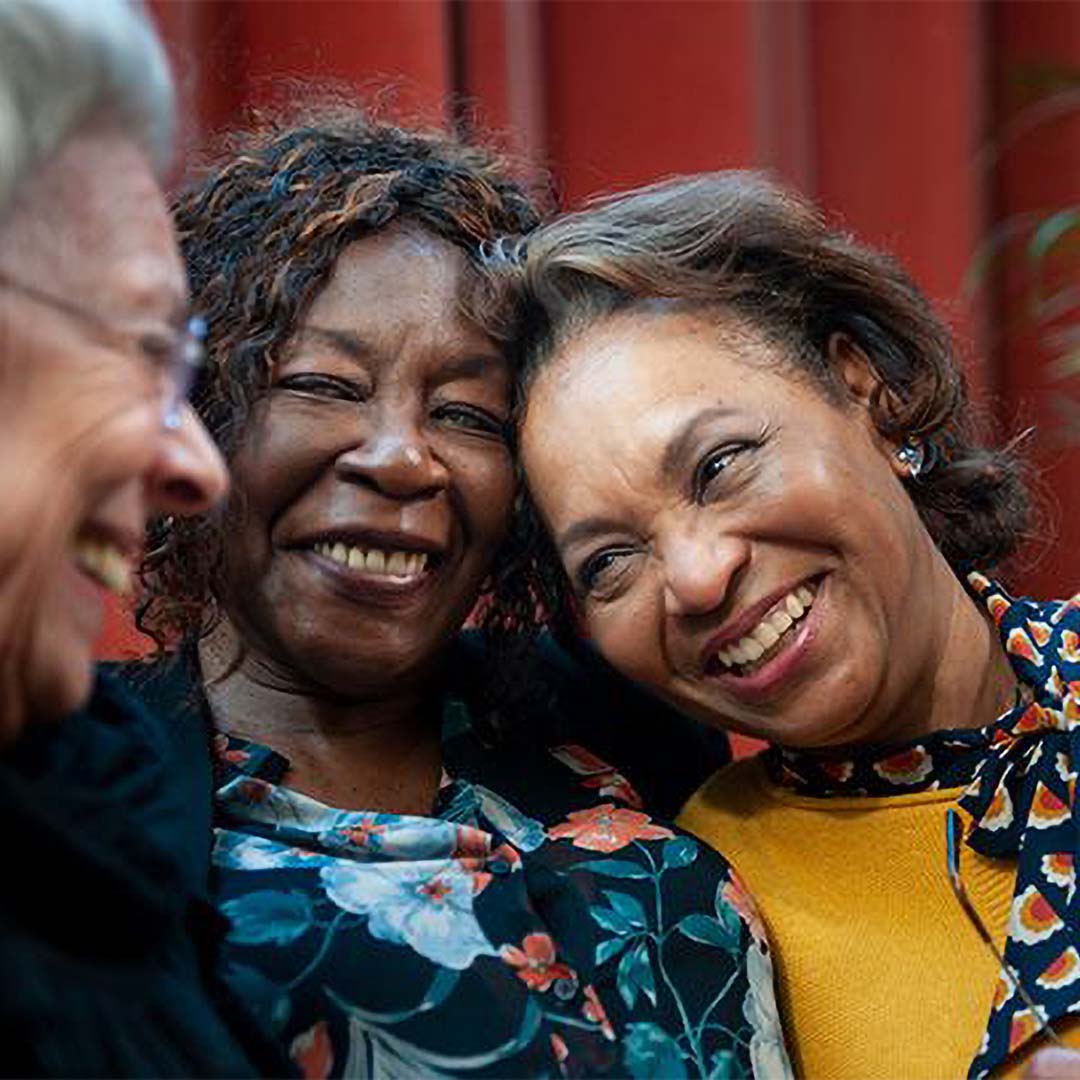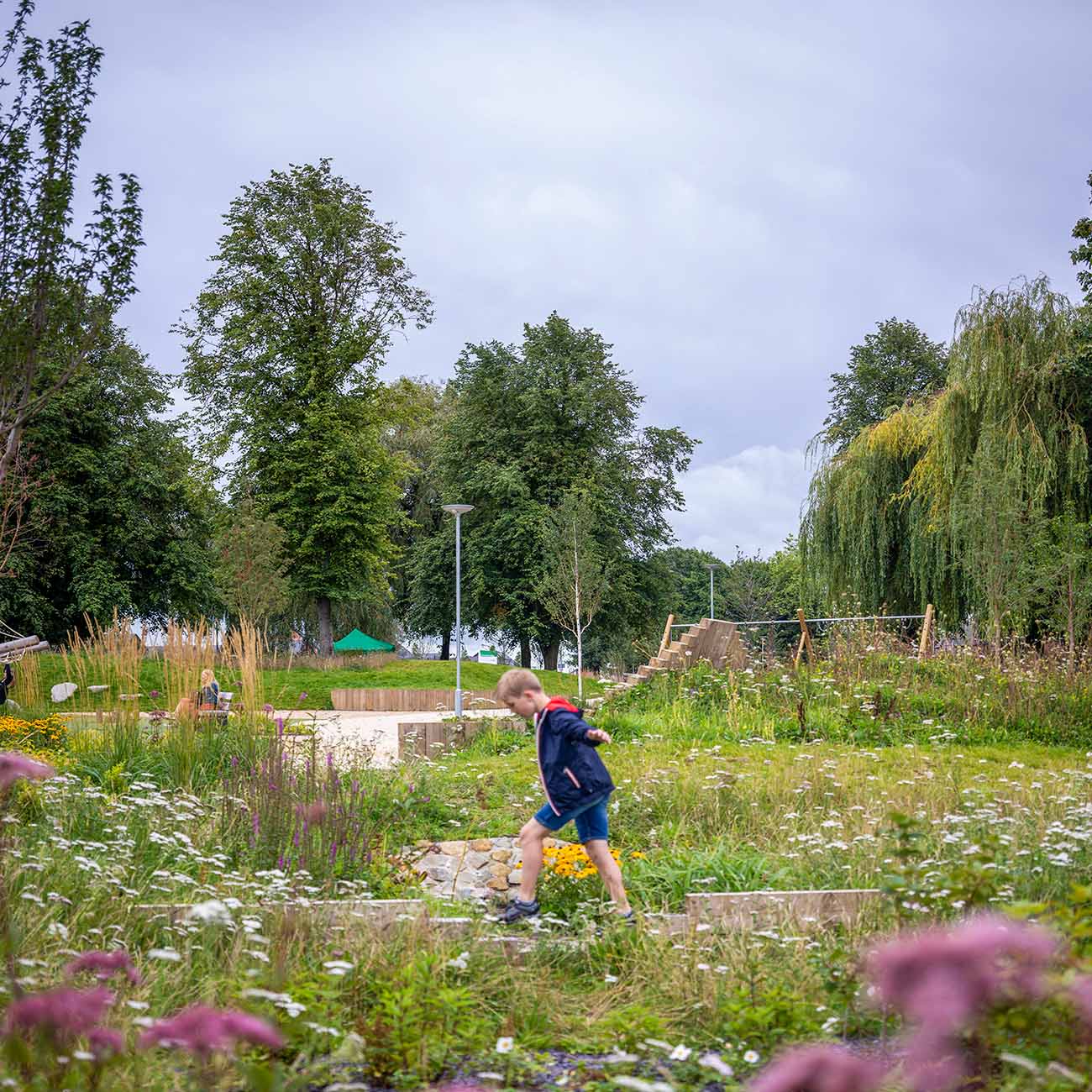Identity
Identity refers to the qualities, beliefs, personality traits, appearance and/or expressions that characterise a person or group. These can include (but are not limited to): a person’s race, ethnicity, culture, beliefs, ethnicity, gender, and age.
A space is something abstract. It becomes a place when an individual is attracted to it, or it has symbolic meaning to a person. Places can become part of an individual’s self-identity and create a continuous sense of self and self-worth. The opposite can be said for a space that is incompatible or insensitive to one’s own identity.
Design, which is sensitive and understanding to people’s different identities – in particular underrepresented identities – creates inclusion.
Gender-neutral toilets are more inclusive
For the University of Wales Newport Campus, our wayfinding designers considered a wide range of disabilities in order to make the signage system inclusive and meet the university’s accessibility guidelines. Many of the signs incorporated well-contrasted tactile text and symbols, benefitting both sighted and blind/partially sighted users.
The campus also included gender-neutral toilets to create an inclusive place for transgender, non-binary, and gender non-conforming individuals. Taking this approach means individuals do not need to choose between the two traditional options of men’s and women’s bathrooms which may make them feel uncomfortable, but instead helps create a safe, welcoming environment for all.
Contact: Marc Jenkins
Project: More information
Multi-faith space for meditation or prayer
Including a multi-faith prayer space in a design helps provide the end-users with a quiet, purpose-built space to use for moments of meditation or prayer, regardless of their faith, beliefs, or religion. This is particularly relevant in public places, such as hospitals where it is important to recognise the diverse range of cultural and religious backgrounds of patients, visitors and staff.
Contact: David Brennan
Project: More information
BDP Podcast: Exploring gender equity through our buildings and places
The design of buildings and spaces can shape our behaviour and perceptions of the world in subtle yet powerful ways. How then, have public spaces come to impact people of different genders and reinforced narrow stereotypes and assumptions?
For the debut podcast in our Design for Inclusion series, we invited four guests to share their experiences of designing for gender equity. From wayfinding and lighting intensity to residential development layouts, this week’s design experts debate what truly matters when creating a more inclusive world.
Design that reflects the local culture
A strong Manchester identity is conveyed throughout the design of PwC’s Manchester offices. The area’s topography, its industrial heritage and bee symbolism are all featured in lighting, flooring and wall panelling.
The design is also a reflection of its people and their ability to adapt in challenging circumstances. During the office fit-out, the tragedy of Manchester Arena unfolded and many PwC staff were involved and impacted by the atrocities of that May evening. Woven through the space there are references to the 22 lives lost. The iconic meeting booth is decorated with 22 bees which are hidden enough to be subtle yet visible enough to have true meaning for everyone.
Contact: Christopher Gibbs
Project: More information
Being able to ‘age‑in‑place’
Age-friendly living describes housing designed to be accessible (barrier-free) and enable people to live independent, fulfilling lives as they grow older.
The linking of home and neighbourhood is important in terms of looking beyond the site boundary and considering how age-friendly developments can form part of a sustainable and resilient urban strategy.
Our report explores ideas on how we can design places that make it easier for older people to ‘age-in-place’ and stay connected, healthy and active in their own communities.
Wayfinding with numbers provides a universal language
At Southmead Hospital we used an airport gate model to reduce the visual clutter of signage and create a sense of calm for patients and visitors. People intuitively understand how to navigate huge airports thanks to the simplicity of only needing to know ‘Terminal A Gate 27’.
Gate numbers similar to those used in an airport provide a universal language appealing to all nationalities.
Contact: Marc Jenkins
Project: More information
Lighting creates a sense of safety for vulnerable people
Often our lighting designers are faced with the challenge of balancing darkness in the exterior environment for the welfare of wildlife, with safety concerns of vulnerable persons at night.
At Roehampton University campus, our lighting designers came up with a solution, which avoided bright spaces everywhere, thus protecting the environment. Clear, safe pedestrian routes were created within the cloisters that run along the walls of the university campus buildings, with light over spilling from the buildings, providing a balanced, glare-free alternative route with no associated dark shadows and protection of wildlife.
Contact: Colin Ball
Project: More information


